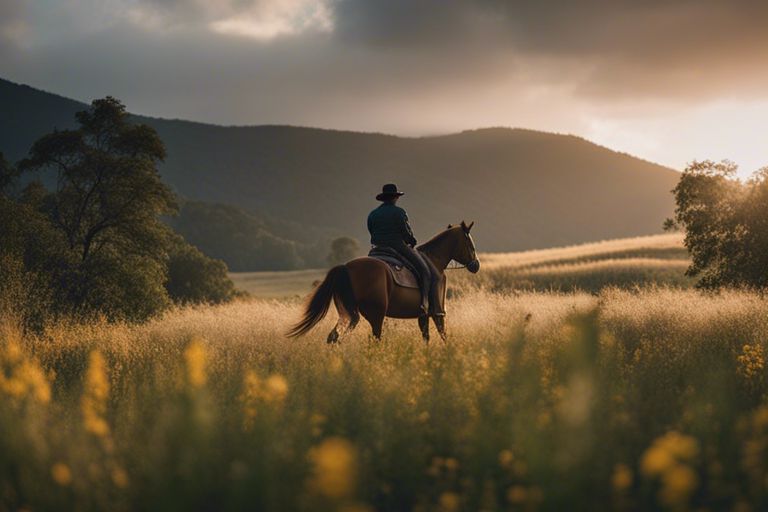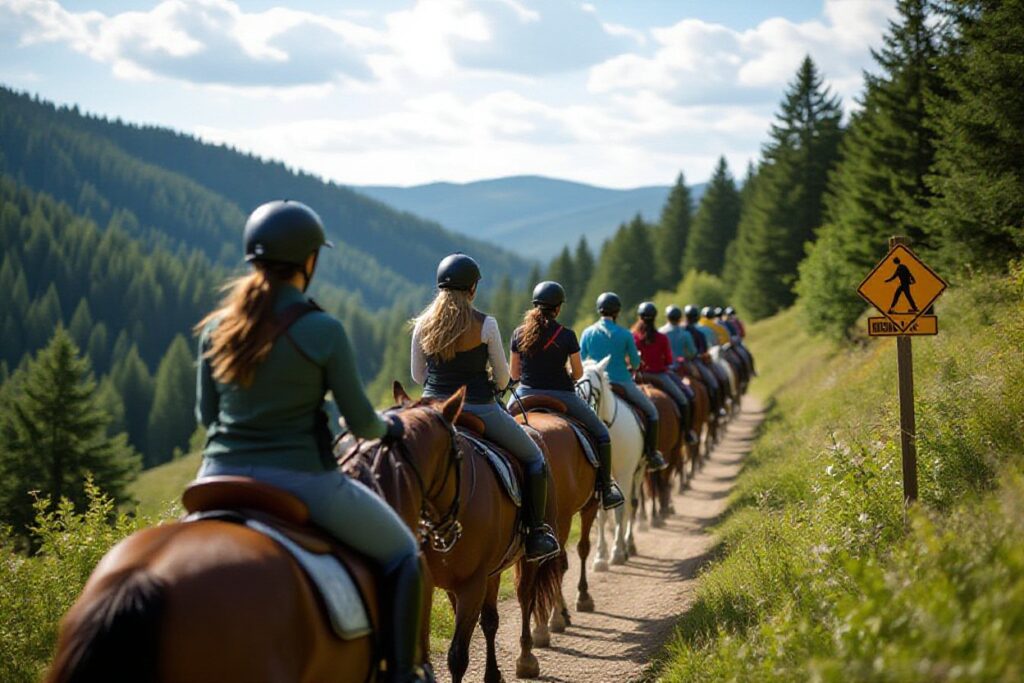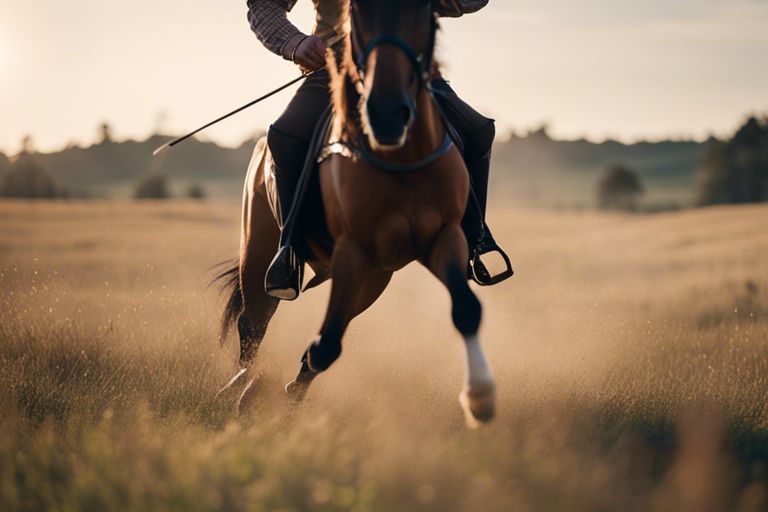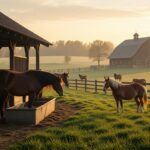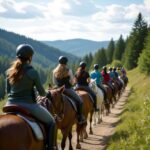Ecosystems are delicate systems where every interaction matters. When you enjoy horse riding in the great outdoors, it’s important to consider the impact you have on the local ecosystems. The presence of horses can lead to soil erosion and loss of vegetation, disrupting the habitat of wildlife in the area. By being mindful of where you ride and how you care for the natural environment, you can help preserve the balance of the ecosystem for future generations to enjoy.
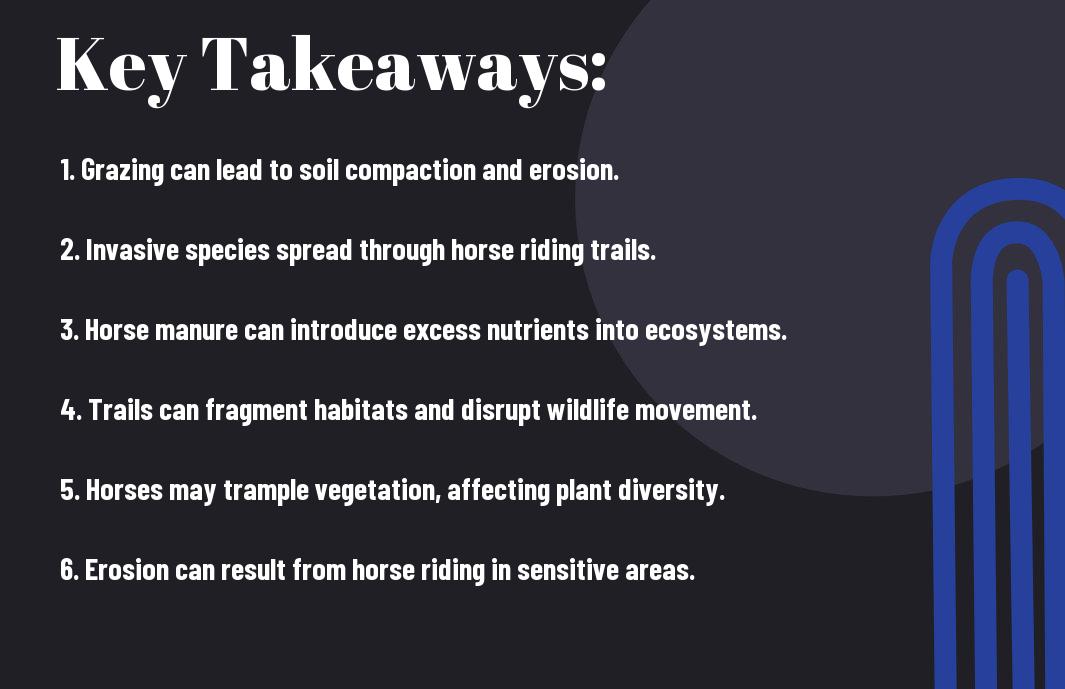
The Ecosystems Affected
While enjoying a peaceful horseback ride through nature, it’s important to be aware of the impact your activity can have on local ecosystems. Your presence and the presence of your horse can inadvertently affect the delicate balance of various habitats.
Grasslands and Prairies
On your ride through grasslands and prairies, the hooves of your horse can compact the soil and disrupt the natural growth of plants. This can lead to soil erosion and a decrease in biodiversity. Additionally, the grazing habits of horses can overgraze certain areas, impacting the food sources and shelter for many native species.
Forests and Woodlands
Affected by your presence, forests and woodlands can also suffer from the trampling of horse hooves. This can damage the understory vegetation and disrupt the habitats of smaller animals. In extreme cases, the disturbance caused by horse riding can lead to soil compaction and erosion, affecting the health of the entire ecosystem.
With careful consideration and responsible riding practices, you can minimize the negative impact on these ecosystems. Stick to designated trails, avoid riding in sensitive areas, and be mindful of the flora and fauna around you. By respecting the natural environment and practicing sustainable riding habits, you can help preserve the beauty and diversity of local ecosystems for future generations to enjoy.
Horse Riding’s Environmental Footprint
Some activities related to horse riding can have a significant impact on local ecosystems. Soil erosion and compaction are two key factors affected by horse riding.
Soil Erosion and Compaction
An increase in horse riding in an area can lead to soil erosion as the hooves of horses can loosen the soil, making it more susceptible to being carried away by wind or water. Additionally, the constant trampling of horses can compact the soil, reducing its ability to absorb water and nutrients.
Vegetation Damage and Loss
One of the most concerning impacts of horse riding on local ecosystems is vegetation damage and loss. As horses graze and trample through natural habitats, they can destroy plants and disrupt ecosystems, leading to a loss of biodiversity and habitat for other species.
It is important to be mindful of the impact horse riding can have on local ecosystems and take steps to minimize these effects. By staying on designated trails, avoiding sensitive habitats, and practicing sustainable horse management techniques, you can help protect the delicate balance of the environment.
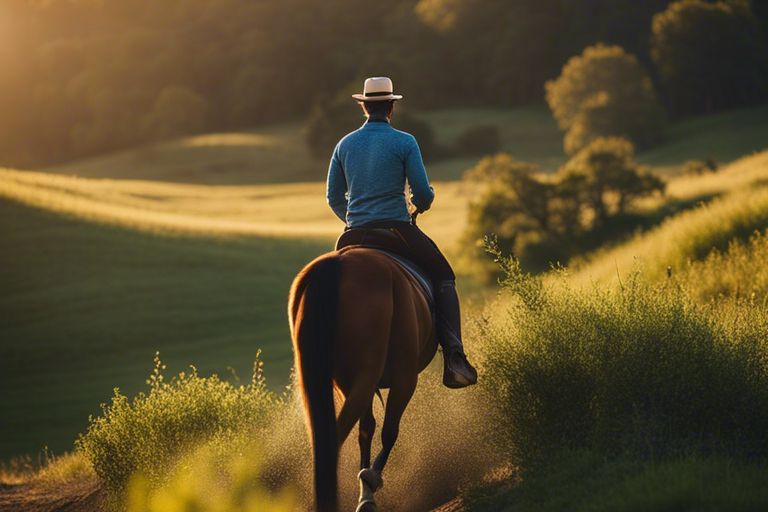
Impact on Wildlife Habitats
Many avid horse riders are unaware of the detrimental effects that their activity can have on local wildlife habitats. As horses trample through natural areas, they can cause significant disruption to the ecosystems that support a variety of plant and animal species.
Disruption of Native Species
Native plants and animals rely on stable and undisturbed habitats to thrive. When horses are introduced into these environments, they can trample vegetation, damage soil structure, and disrupt food chains. The introduction of non-native species through horse riding activities can also have negative impacts on the native wildlife, leading to competition for resources and potential displacement of important species.
Alteration of Migration Patterns
Impact on wildlife habitats can also lead to the alteration of migration patterns for many species. As horses move through natural areas, they can disrupt the traditional routes that wildlife take during migration seasons. This disruption can have serious consequences for the survival of certain species, as they may rely on specific habitats for feeding, resting, or breeding.
Migration plays a crucial role in the survival of many species, and any disruption to these patterns can have far-reaching consequences for ecosystem health. It is important to consider the impact of horse riding on wildlife habitats and take measures to minimize these effects to ensure the long-term sustainability of our natural ecosystems.

Water Quality and Horse Riding
Once again, the impact of horse riding on water quality in local ecosystems is a crucial aspect to consider. Horses can have a significant effect on the quality of water sources in the areas where they are ridden.
Stream and River Pollution
River pollution can occur as a result of horse riding activities near water sources. The waste produced by horses, such as manure and urine, can contain harmful bacteria and nutrients that can seep into the water and disrupt the delicate balance of aquatic ecosystems. Additionally, erosion caused by horse hooves along riverbanks can lead to sediment runoff, further degrading water quality and harming aquatic life.
Water Table Depletion
Quality water tables can also be negatively impacted by horse riding in the area. The constant trampling of hooves can compact the soil, making it harder for rainwater to infiltrate and recharge the groundwater. This can lead to a decrease in water availability for plants, animals, and even human populations that rely on these groundwater sources.
Plus, the increased presence of horses in an area can also lead to an accumulation of nutrients from manure, which can further degrade water quality and lead to eutrophication in local water bodies. It is crucial to consider and mitigate these impacts to protect the health of our water sources and the biodiversity of local ecosystems.
The Role of Horse Riding in Ecosystem Disruption
Habitat Fragmentation
One of the ways in which horse riding can disrupt local ecosystems is through habitat fragmentation. When horses are allowed to roam freely in natural areas, they can trample vegetation, compact soil, and create trails that fragment habitats. This fragmentation can disrupt the natural flow of species and lead to isolation of populations. As a result, this can have negative impacts on the biodiversity and overall health of the ecosystem.
Changes in Fire Regimes
Changes in fire regimes are another significant impact of horse riding on local ecosystems. **For instance**, horses can overgraze areas, reducing the amount of fuel available for wildfires. This might seem like a positive outcome at first, but **strong** fire is actually a vital component of many ecosystems, especially in maintaining certain plant communities and recycling nutrients. Without regular, **strong** fires, some plants may become overgrown, leading to imbalances in the ecosystem.
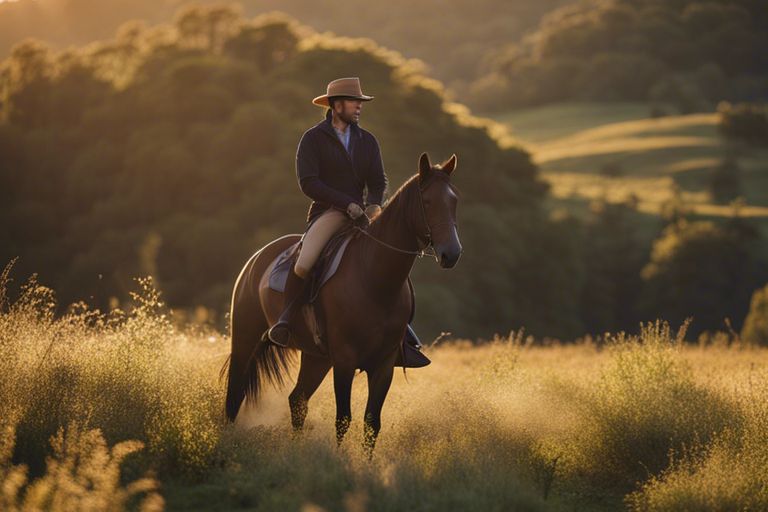
Mitigating the Effects of Horse Riding
Sustainable Trail Management
One way to mitigate the impact of horse riding on local ecosystems is through sustainable trail management. By establishing well-maintained trails and designated riding areas, you can help minimize erosion, protect sensitive habitats, and reduce disturbances to wildlife. Additionally, implementing proper signage and trail markers can help riders stay on designated paths, preventing them from venturing into off-limits areas.
Responsible Horse Riding Practices
One important aspect of responsible horse riding practices is to always stay on marked trails and avoid creating new paths through delicate ecosystems. It is crucial to respect wildlife habitats and give animals plenty of space. By keeping a safe distance and not disturbing wildlife, you can help preserve the natural balance of the ecosystem.
Riding during appropriate times and seasons can also minimize the impact on local ecosystems. Avoiding riding in wet or muddy conditions can prevent soil compaction and erosion. Additionally, being mindful of any regulations or guidelines set forth by local authorities can help ensure that your riding activities have minimal negative effects on the environment.
To wrap up
From above, it is clear that horse riding can have both positive and negative impacts on local ecosystems. While horses can provide a sustainable form of transportation and help maintain trails, their presence can also lead to soil erosion, habitat destruction, and water pollution. As a responsible rider, it is important to be aware of these potential impacts and take steps to minimize them. By staying on designated trails, avoiding sensitive habitats, and properly disposing of waste, you can enjoy the beauty of nature without causing harm to the environment.
Q: What is the impact of horse riding on local ecosystems?
A: Horse riding can lead to soil erosion, vegetation trampling, and disruption of wildlife habitats, ultimately affecting the balance and health of local ecosystems.
Q: How does horse riding contribute to soil erosion?
A: Hooves of horses can compact the soil, making it more susceptible to erosion by wind and water. This can result in loss of fertile topsoil and degradation of the ecosystem.
Q: What are the consequences of vegetation trampling caused by horse riding?
A: Trampling of vegetation by horses can lead to destruction of plant species, reduction in biodiversity, and alteration of natural habitats, impacting the ecosystem’s overall stability.
Q: How does horse riding disrupt wildlife habitats in local ecosystems?
A: Increased human presence due to horse riding can disturb wildlife, leading to stress, displacement, and disruption of feeding or breeding patterns, ultimately affecting the ecosystem’s fauna.
Q: What are some sustainable practices that can minimize the impact of horse riding on local ecosystems?
A: Implementing designated trails, practicing leave-no-trace principles, avoiding sensitive areas, and proper waste disposal are some sustainable practices that can help minimize the impact of horse riding on local ecosystems.
